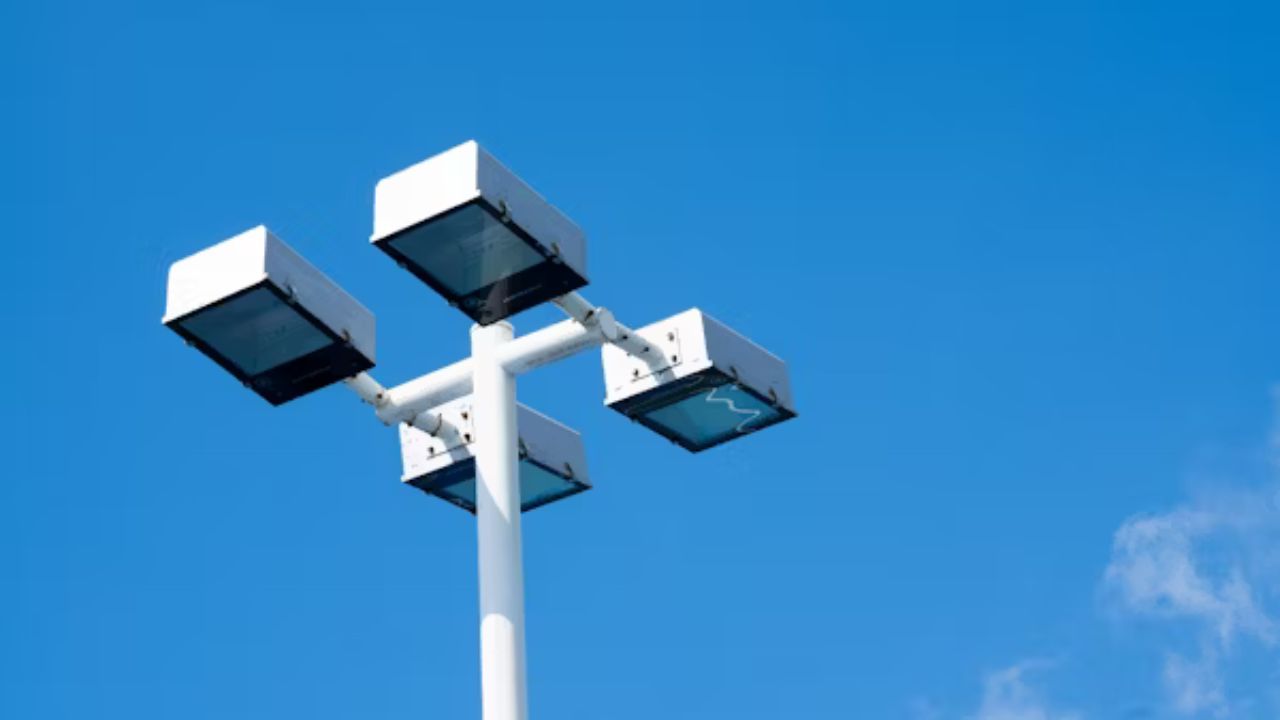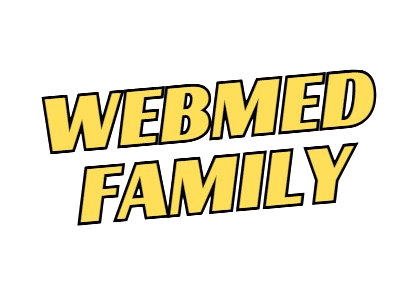BLOG
United Airlines Flight UA770 Emergency Diversion: What Happened & Why It Matters

United Airlines Flight UA770 Emergency Diversion — a Boeing 787-9 operating a long-haul route — declared a mid-air emergency and diverted from its planned transatlantic route to an alternate airport. Passengers and crew landed safely, but the incident instantly raised questions about what went wrong, how the crew responded, and what the episode tells us about modern aviation safety. This article walks through the timeline, the likely technical triggers, how crews and airports handled the situation, and why the event matters for travelers and the industry.
What happened — a concise timeline
According to live-tracking reports and aviation news outlets, UA770 departed its origin (reported variably in early coverage as Barcelona or another European gateway) bound for Chicago O’Hare. Roughly an hour to two hours into cruise, the flight crew received alerts from the aircraft systems and declared an emergency — standard procedure that gives the flight priority handling. The pilots squawked 7700 (the transponder code for a general emergency), coordinated with air traffic control, and diverted to a nearby suitable international airport — widely reported as London Heathrow in immediate coverage — where the aircraft landed without injuries. United later re-accommodated passengers.
Why the crew diverted: preliminary causes
Multiple aviation outlets reporting from official statements and airline updates indicate the diversion stemmed from a concern with critical aircraft systems — most frequently cited were cabin pressurization warnings or automated system fault alerts. In pressurization scenarios, even a single warning is treated seriously because a real failure could threaten passengers’ ability to breathe at altitude; similarly, other automated warnings (engine, fuel, or control-system anomalies) also compel crews to act conservatively. At the time of landing, there were no reported injuries, and some early investigations pointed toward a sensor or instrument fault rather than a catastrophic mechanical failure — although official findings typically take weeks or months. Because the root cause had not been publicly confirmed in initial reports, most outlets stressed that the decision to divert was precautionary and aligned with training and safety protocols.
How the crew and ground teams handled it
The crew’s response follows a well-rehearsed checklist: assess the alert, communicate with the cabin, declare the emergency to ATC if needed, descend to a safe altitude, and divert to the nearest suitable airport. Public reports emphasized calm, professional pilot communications and coordination with air traffic control — exactly what safety procedures are designed to produce. On the ground, airport emergency services are typically placed on alert for such arrivals; in this case, they were not required to fight a fire or treat injuries, but they stood ready. United Airlines’ customer-service teams organized rebookings, hotel accommodations for overnight delays, and arrangements for passengers’ onward travel. That suite of responses is standard under airline contingency rules and often required by carriers’ contracts of carriage.
Why declaring an emergency matters — and what “emergency” really means
To non-aviation travelers, “declaring an emergency” can sound alarming. In practice, a declaration (or squawk 7700) is a procedural tool that gives the flight priority handling and signals that the crew wants immediate ATC support. It does not necessarily mean a life-threatening situation; it means the situation could become serious if not managed. Because modern aircraft are highly automated and carry numerous sensors, crews will sometimes divert for warnings that later prove to be minor faults or false alarms — and that’s exactly the point: systems are designed to err on the side of caution to protect passengers and crew. The UA770 diversion is an example of the system working as intended—detect, respond, and land safely.
Passenger experience — inconvenience vs. safety
For passengers, the immediate impact is disruption: missed connections, delays, unexpected overnight stays, and stress. Airlines typically provide meals, accommodation, and rebookings when a diversion creates multi-hour delays or cancels subsequent segments. Social media posts and early articles described mixed emotions on board — relief at a safe landing, frustration over travel disruption — but no injuries or panic. While inconvenient, these customer-service impacts are part of why aviation regulators and carriers prefer conservative decisions in ambiguous situations: preserving life and preventing escalation outweigh the cost of re-routing.
Industry implications: maintenance, inspections, and data
Diversions trigger formal follow-ups: the airline’s maintenance team inspects the aircraft, engineers analyze flight data and system logs, and regulators (like the FAA or the country’s civil aviation authority where the aircraft landed) may open inquiries. If the cause is a sensor fault, it can prompt fleet-wide checks or software/part updates; if it’s a one-off mechanical issue, repairs and targeted inspections follow. Importantly, these events feed into safety databases that help aviation authorities detect patterns and mandate corrective actions when multiple similar incidents appear. Early reporting around UA770 suggested a probable sensor or pressurization-control issue rather than an engine or structural failure — but investigators would confirm or refine that picture.
What travelers should take away
-
Safety-first decisions are normal. Pilots and airlines prioritize lives and will divert when indicators suggest elevated risk. A diversion is usually a sign that safety systems and crew training functioned correctly.
-
Expect inconvenience but also support. Airlines generally provide rebookings and care. Keep documentation and receipts if you incur unexpected expenses — some costs may be reimbursable depending on the carrier’s policies and local consumer-protection rules.
-
Monitor official airline and regulator updates. Early reports can contain inaccuracies; official statements from the airline or the civil aviation authority will provide confirmed details and follow-up actions once investigations conclude.
Why this incident matters beyond a single flight
Although UA770 ended safely, every diversion is a reminder that commercial aviation depends on a complex interplay of automated systems, human judgment, and robust procedures. Investigations that follow help the industry learn and adapt—whether that means replacing a faulty sensor, changing inspection intervals, or updating pilot checklists. For the flying public, these incidents reinforce two practical points: air travel is one of the safest modes of transport, and the inconveniences passengers sometimes face are often the price of that safety margin.
Final notes — what to watch next
Look for an official statement or final investigative report from United Airlines Flight UA770 Emergency Diversion and the relevant aviation authority; those documents will clarify the root cause and any recommended corrective actions. Until then, the UA770 diversion stands as an instructive case: a potential technical problem detected in flight, a calm and competent crew response, and a safe landing — followed by the standard cycle of maintenance, data review, and regulatory oversight. That cycle is how aviation keeps improving.
BLOG
How to Catch a Mouse: Effective Methods for Dealing with Rodents

MOUSE can be a real nuisance in homes and businesses, often causing damage to property and spreading diseases. If you’re struggling with a mouse infestation, it’s essential to know the best ways to catch a mouse effectively and humanely. In this guide, we’ll walk you through several tried-and-true methods to help you catch a mouse and prevent future infestations. Whether you’re dealing with a single intruder or a full-blown infestation, these tips will help you regain control of your space.
Why You Need to Catch a Mouse
Mice are not only bothersome but also pose a significant health risk. They can spread diseases like salmonella, hantavirus, and leptospirosis through their droppings, urine, and saliva. Additionally, they chew through electrical wires, insulation, and even furniture, which can lead to costly damage. Catching a mouse quickly is crucial to minimizing these risks and keeping your home or business safe.
Signs You Have a Mouse Problem
Before jumping into how to catch a mouse, it’s important to identify if you actually have one. Here are some common signs of a mouse infestation:
-
Droppings: Tiny, black pellets are a common sign of mice.
-
Chewed Items: Mice tend to chew on packaging, furniture, wires, and more.
-
Noises: Scratching, squeaking, or scurrying sounds, especially at night.
-
Nesting Material: Mice will often gather materials like paper, fabric, or insulation to create nests.
If you’ve noticed any of these signs, it’s time to act and start implementing a strategy to catch the mouse.
How to Catch a Mouse: 5 Effective Methods
1. Using Mouse Traps
The most common method to catch a mouse is by using traps. These come in various types, each suited for different needs and preferences. Here are the most popular options:
Snap Traps
Snap traps are a classic choice for mouse control. They work by quickly and humanely killing the mouse when it enters the trap. These traps are widely available, inexpensive, and easy to set up.
How to Use Snap Traps:
-
Place the trap along walls, where mice frequently travel.
-
Bait the trap with food such as peanut butter, cheese, or sunflower seeds.
-
Check the traps regularly to dispose of any caught mice.
Electronic Traps
If you want a cleaner, more high-tech solution, an electronic trap may be the way to go. These traps use a high-voltage shock to humanely kill the mouse. They are often reusable and easy to clean.
How to Use Electronic Traps:
-
Place the trap in areas where mice are active.
-
Set up the trap with a small amount of bait (peanut butter works well).
-
Check the trap and dispose of the mouse promptly.
Live-Catch Traps
For those who prefer a more humane method, live-catch traps are an option. These traps capture the mouse alive, allowing you to release it far from your home.
How to Use Live-Catch Traps:
-
Position the trap where you’ve seen mouse activity.
-
Use bait such as fruit or peanut butter to lure the mouse inside.
-
Once caught, release the mouse several miles away from your home to prevent it from returning.
2. Use of Mouse Repellents
If you’d rather not catch a mouse physically, repellents can help deter mice from entering your home in the first place. These can be in the form of sprays, ultrasonic devices, or natural repellents.
-
Peppermint Oil: Mice dislike the smell of peppermint. Soak cotton balls in peppermint oil and place them near entrances and potential nesting sites.
-
Ultrasonic Repellents: These devices emit a high-pitched sound that’s inaudible to humans but uncomfortable for mice.
-
Commercial Mice Repellents: There are several sprays available that can be used around the home to create an unpleasant environment for mice.
While repellents can be effective, they are often best used in combination with trapping methods.
3. Sealing Entry Points
Mice are excellent at squeezing through small openings, so preventing them from getting inside in the first place is essential. After catching a mouse, inspect your home thoroughly and seal any potential entry points.
How to Seal Entry Points:
-
Check for gaps around doors, windows, and vents.
-
Seal cracks in the foundation or walls with caulk.
-
Install weather stripping around doors to prevent entry.
By sealing these entry points, you can make your home less inviting to future mice.
4. Baiting with Foods Mice Love
Mice have a keen sense of smell and are attracted to various foods. When setting up traps, baiting them with the right food is crucial. Some of the best foods to use as mouse bait include:
-
Peanut butter: Sticky and irresistible to mice.
-
Sunflower seeds: A favorite snack for mice.
-
Chocolate or candy: High in sugar, making them a tempting treat.
-
Cheese: While it’s a popular stereotype, cheese can be effective in attracting mice.
5. Using Natural Predators
If you want a natural solution to your mouse problem, consider using a pet that hunts rodents, like a cat. Cats are instinctual hunters, and their presence alone can deter mice from entering your home. However, this method might not always be as effective if you’re dealing with a large infestation.
How to Prevent Mice from Coming Back
Catching a mouse is one thing, but preventing future infestations is key to long-term rodent control. Here are a few preventive measures:
-
Maintain Cleanliness: Mice are attracted to food scraps, so keeping your home clean and storing food in airtight containers is essential.
-
Proper Waste Management: Dispose of garbage regularly and use trash cans with tight-fitting lids.
-
Trim Trees and Bushes: Mice can use overhanging branches to access your roof. Keep trees and bushes trimmed away from your home.
-
Check for Gaps and Cracks: Regularly inspect your home for new entry points.
Conclusion: How to Catch a Mouse
Catching a mouse may seem daunting, but with the right tools and techniques, it’s a manageable task. Whether you prefer snap traps, electronic traps, or humane live-catch traps, there’s a method for every situation. Just remember to combine these strategies with preventive measures to ensure that mice don’t return. If you’re facing a serious infestation, consider consulting a professional pest control service for additional help.
BLOG
HMS Photovoltaik: Smart Solar Energy Solutions

The global energy landscape is changing rapidly as nations, industries, and individuals shift toward renewable energy. Solar power is at the heart of this transformation, offering clean, reliable, and cost-effective electricity. Among the many innovations in solar energy, HMS Photovoltaik has emerged as a concept representing smarter, more efficient photovoltaic systems with hybrid management and advanced monitoring capabilities.
HMS Photovoltaik is not just about generating power — it is about optimizing solar energy production, ensuring system stability, and enabling a sustainable future.
What is HMS Photovoltaik?
HMS Photovoltaik can be understood as a hybrid management system for photovoltaic installations, integrating traditional solar panels with intelligent monitoring, storage solutions, and performance optimization technologies.
The concept brings together:
-
High-efficiency photovoltaic modules for maximum energy generation.
-
Hybrid management systems (HMS) that balance solar, battery, and grid power.
-
Smart monitoring platforms to track energy production and consumption in real time.
-
Scalable solutions adaptable for households, businesses, and large-scale solar farms.
Core Features of HMS Photovoltaik
1. Advanced Monitoring
Real-time data collection and analytics ensure that every panel in the system operates at peak efficiency.
2. Hybrid Management
HMS Photovoltaik balances multiple power sources: solar panels, energy storage, and the electrical grid.
3. Energy Storage Integration
By connecting to batteries, HMS Photovoltaik allows users to store excess energy and use it during peak demand or at night.
4. Remote Accessibility
Cloud-based systems allow homeowners and businesses to monitor their solar installations from smartphones or computers.
5. Scalability
Whether for a single household or an industrial-scale solar farm, HMS Photovoltaik solutions can expand to meet diverse energy needs.
Benefits of HMS Photovoltaik
Increased Efficiency
Smart monitoring reduces energy losses by identifying underperforming panels or faults.
Energy Independence
By combining solar with storage, HMS Photovoltaik reduces reliance on the grid.
Cost Savings
Optimized solar performance and stored energy to lower electricity bills.
Environmental Impact
By maximizing renewable energy usage, HMS cuts carbon emissions.
Reliability
Hybrid systems provide backup power during outages, ensuring energy continuity.
Applications of HMS Photovoltaik
Residential Use
-
Rooftop solar panels with hybrid management.
-
Battery storage for night-time usage.
-
Remote monitoring via mobile apps.
Commercial and Industrial Use
-
Solar-powered warehouses and office complexes.
-
Energy savings for manufacturing plants.
-
Integration with EV charging stations.
Agricultural Applications
-
Solar-powered irrigation systems.
-
Energy supply for greenhouses and rural infrastructure.
Utility-Scale Solar Farms
-
Grid-connected solar parks with smart monitoring.
-
Optimized energy dispatch and storage management.
HMS Photovoltaik and Energy Transition
The transition to renewable energy requires more than installing solar panels — it needs intelligent management systems that ensure efficiency and reliability. HMS fits perfectly into this framework, supporting the global shift toward:
-
Decentralized power generation – empowering communities to produce their own energy.
-
Carbon neutrality goals – reducing dependence on fossil fuels.
-
Smart grids – connecting solar systems with AI-powered energy distribution networks.
Technical Aspects of HMS Photovoltaik
Photovoltaic Panels
The foundation of HMS is high-performance panels that convert sunlight into electricity.
Inverters
These devices transform direct current (DC) into alternating current (AC) for household and industrial use.
Hybrid Controllers
The HMS manages the flow of electricity between solar panels, batteries, and the grid.
Energy Storage
Lithium-ion or other battery technologies store excess solar energy.
Monitoring Software
AI and IoT-based platforms provide real-time data visualization and predictive maintenance alerts.
Why HMS Photovoltaik Stands Out
-
Smarter than traditional solar: Continuous monitoring ensures peak performance.
-
Resilient in all conditions: Hybrid systems guarantee backup even when sunlight is low.
-
Future-ready: Integration with EVs, smart homes, and AI-driven energy platforms.
-
User-friendly: Cloud-based apps make energy management simple for non-experts.
Challenges Facing HMS Photovoltaik
High Initial Investment
Advanced systems with storage and monitoring cost more upfront than standard solar setups.
Technical Complexity
Installing and maintaining HMS requires skilled professionals.
Battery Lifecycle
Storage units have limited lifespans and require eventual replacement.
Grid Integration
In some regions, regulations on feeding solar power into the grid remain restrictive.
Future of HMS Photovoltaik
AI and Machine Learning
Predictive analytics will help forecast energy demand and optimize solar usage.
Blockchain Technology
Decentralized energy trading platforms could integrate with HMS.
Next-Generation Storage
Solid-state batteries and other breakthroughs will improve efficiency and longevity.
Wider Adoption
As costs decrease, Photovoltaik will become accessible to more households and businesses.
Practical Tips for Implementing HMS Photovoltaik
-
Assess Your Needs – Calculate current energy consumption.
-
Choose the Right System Size – Oversizing or undersizing reduces efficiency.
-
Invest in Storage – Batteries maximize independence and cost savings.
-
Use Accredited Installers – Ensure safety and compliance with regulations.
-
Monitor Regularly – Take advantage of real-time analytics to optimize performance.
Conclusion
HMS Photovoltaik represents the future of solar energy systems — combining high-efficiency panels, hybrid energy management, advanced monitoring, and storage integration. By offering greater independence, reliability, and sustainability, it is reshaping how individuals, businesses, and communities harness the power of the sun.
BLOG
Veneajelu: A Journey into Finnish Boating Traditions

When you think of Finland, the first images that may come to mind are breathtaking forests, shimmering lakes, and cozy cabins tucked away in nature. But there’s another experience deeply tied to Finnish culture that often goes hand in hand with these landscapes: Veneajelu. More than just boating, veneajelu is a tradition that combines relaxation, exploration, and cultural heritage. It is about embracing the water as part of everyday life, whether that means cruising gently across a quiet lake, exploring the islands of the archipelago, or enjoying a family trip in Helsinki’s open waters.
In this article, we’ll explore the meaning of veneajelu, its cultural importance, the experience of veneajelu Helsinki, and why boating in Finland continues to be such a timeless way of life.
What is Veneajelu?

Veneajelu refers to the simple act of taking a boat ride. But for the Finnish people, it is so much more than that. With thousands of lakes and a long coastline, Finland is often called “the land of a thousand lakes” (though in reality there are closer to 188,000). For centuries, boats have been essential for transport, fishing, and connecting communities separated by water. Over time, what started as a necessity became a treasured activity—both practical and recreational.
Today, veneajelu is seen as a way to unwind, reconnect with nature, and spend quality time with loved ones. It doesn’t always involve fast motorboats; sometimes it’s about rowing a small wooden boat on a peaceful summer evening, or sailing quietly as the wind guides you across open water.
The Cultural Importance of Veneajelu in Finland
In Finland, water is not just part of the landscape—it’s part of identity. For generations, Finnish families have passed down their boating traditions, making veneajelu an activity that bridges past and present.
During the short but magical summer months, locals escape to their lakeside cottages (known as mökki). Here, boating is as natural as swimming, grilling sausages, or heating up the sauna. Children grow up learning how to handle boats, and weekends often include at least one ride across the lake.
Veneajelu also carries a strong social element. It’s not unusual for friends to pack a picnic, head out on the boat, and anchor by a small island for a day of laughter, food, and connection. In many ways, veneajelu represents the Finnish values of simplicity, closeness to nature, and balance between solitude and togetherness.
Experiencing Veneajelu in Helsinki
While veneajelu is deeply tied to lakes and rural settings, veneajelu Helsinki offers a unique urban twist to this traditional activity. Helsinki, the capital of Finland, is surrounded by the Baltic Sea and dotted with countless islands. This makes it one of the best places to experience boating in an entirely different way.
Imagine gliding across the sparkling waters while still having the city skyline within view. From the boat, you can see Helsinki’s famous landmarks—the white Helsinki Cathedral, the bustling Market Square, or the historic Suomenlinna fortress. At the same time, a short ride can take you to quiet, green islands where the sound of the city fades away completely.
For tourists, veneajelu Helsinki provides a chance to see the city from a new perspective. Guided boat tours are available, but many prefer the authenticity of smaller rides, where the experience feels less like a sightseeing trip and more like stepping into Finnish life. For locals, it’s simply a continuation of their boating tradition, just in a more urban setting.
Types of Veneajelu
Not all veneajelu experiences are the same. Depending on your mood, preferences, or location, you can enjoy boating in different ways:
1. Rowing Boats
Traditional wooden rowing boats are still widely used, especially in rural areas. There’s something incredibly peaceful about rowing across a still lake at sunset, hearing only the gentle splash of the oars.
2. Motorboats
Motorboats make it easier to cover long distances, which is especially useful in areas like Helsinki’s archipelago where there are many islands to explore. Families often use motorboats for day trips and fishing.
3. Sailing Boats
For those who love the feeling of the wind guiding their journey, sailing is a favorite. It connects people with nature in a unique way, relying on skill and patience rather than speed.
4. Canoes and Kayaks
Though not always included in the traditional sense of veneajelu, paddling is becoming more popular as part of outdoor recreation. It offers an even closer connection with the water and allows for quiet exploration.
Each type of boat ride reflects a different side of veneajelu—whether it’s about leisure, sport, or cultural tradition.
Veneajelu as a Form of Relaxation

One of the reasons veneajelu has remained popular through generations is the sense of calm it brings. Out on the water, the world feels slower, quieter, and more manageable. The stress of work or city life seems to fade as the boat drifts along.
Studies show that spending time near water can reduce anxiety and improve mental well-being. For Finns, this has been an unspoken truth for centuries. That’s why many describe veneajelu as almost meditative—time to disconnect from everyday worries and reconnect with nature.
Seasonal Charm of Veneajelu
Veneajelu is most common in summer, when the midnight sun stretches days into endless evenings. During this time, boat rides often last late into the night, with the golden glow of the sun lingering on the horizon. But boating doesn’t completely disappear in other seasons.
In spring, the excitement of ice melting and waters opening up brings people back to their boats. In autumn, veneajelu takes on a different mood, with colorful leaves reflecting off the water and a crispness in the air. Winter, of course, freezes many lakes, but in coastal areas like Helsinki, larger boats can still move through the icy waters.
This seasonal rhythm shows just how intertwined veneajelu is with Finnish life—it adapts, just like the people, to the changing climate.
Family and Community Connections
Beyond relaxation and tradition, veneajelu has a strong social role. Families often gather for boating trips, making it part of summer traditions alongside sauna nights and berry picking. Children learn early how to row or handle small boats, giving them skills and confidence in nature.
Communities also come together through boating events and gatherings. In Helsinki, summer festivals often include boat parades or opportunities for visitors to join local families for a ride. This sense of shared activity reinforces the idea that veneajelu is not just about boats—it’s about belonging.
Why Veneajelu Appeals to Visitors
For travelers, experiencing veneajelu is like stepping into the heart of Finnish culture. Unlike museums or guided city tours, a boat ride offers something living and authentic. It allows visitors to see how Finns connect with their environment and to feel that same sense of peace.
Especially in Helsinki, tourists are often surprised by how quickly they can move from the urban center to untouched nature. One moment, you’re passing the busy Market Square, and the next, you’re anchored by a quiet island enjoying coffee and cinnamon buns on the rocks.
The Future of Veneajelu
As times change, so do the ways people practice veneajelu. Modern technology has introduced faster boats, eco-friendly engines, and new ways of navigating. Yet, despite these advancements, the heart of veneajelu remains the same: enjoying the water, spending time with loved ones, and staying close to nature.
There’s also growing interest in sustainable boating. With Finland being environmentally conscious, more boaters are considering electric motors or sailing to reduce environmental impact. This shows that veneajelu, while rooted in tradition, continues to evolve with modern values.
Final Thoughts on Veneajelu
At its essence, veneajelu is more than a boat ride—it’s a lifestyle, a tradition, and a way of connecting with Finland’s natural beauty. Whether experienced in a quiet countryside lake or as part of veneajelu Helsinki, boating offers both locals and visitors the chance to slow down, breathe, and appreciate the simple joys of life.
-

 BUSINESS2 months ago
BUSINESS2 months agoLufanest: Redefining Leadership Through Purpose and Impact
-

 BLOG2 months ago
BLOG2 months agoTrulife Distribution Lawsuit: Key Facts, Allegations & Implications
-

 BLOG2 months ago
BLOG2 months agoMyGreenBucks.net: Proven Path to Financial Freedom
-

 BLOG2 months ago
BLOG2 months agoAnheihe: Meaning, Origin, and Modern Significance
-

 BLOG2 months ago
BLOG2 months agoUrdu Poetry for “far from home” people: دلوں کو چھو لینے والی شاعری پردیسوں کے نام
-

 BUSINESS2 months ago
BUSINESS2 months agoSocial Media Marketing Tips for Small Business:
-

 HEALTH2 months ago
HEALTH2 months agoSleep Hygiene Bio-Hack Rituals: The Science of Better Sleep
-

 BLOG2 months ago
BLOG2 months agoCassasse: The Caribbean Dish You Need to Try
